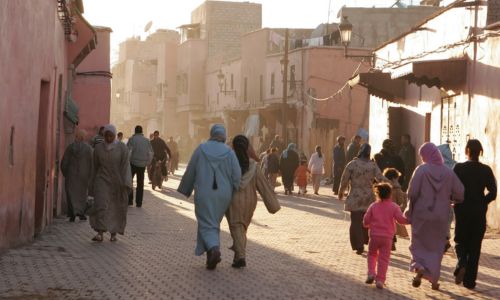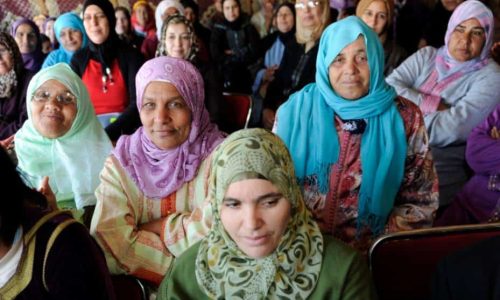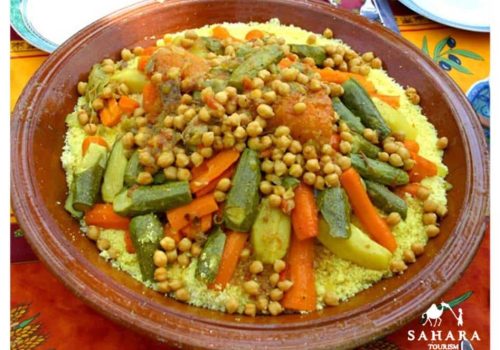Facts About Moroccan People
INTRODUCTION
Moroccans are moroccan people as well as people of Moroccan descent. Like Algerians, Tunisians and Libyans, they are mostly of Berber, Arab or Arab-Berber origin. At the global level, the Moroccan diaspora is present in various countries around the world, but it is mainly present in France and Spain.
In addition to being more than 36 million in Morocco in 2018, they also have a diaspora in Europe, North America, and other countries and territories around the world. It is a country with a multi-ethnic society, having welcomed and combined many ethnic groups throughout its history in addition to Berbers, Phoenicians from the East, contributions from the South (Sub-Saharans) and the North (Romans, Andalusians or Jews). Although the Muslim religion is in the vast majority, several religions have and/or are still in a minority and infinitely practiced such as animism, Judaism and Christianity.

HISTORY OF MOROCCAN PEOPLE
Greek and Latin texts give to the present-day moroccan people various names. After the Roman conquest, at the beginning of the Christian era, the contact will fix Barbarus (from where Berber), according to the Latin division of the world. In solidarity with the Empire, the country undergoes the barbarian invasions: the Vandals occupy the Tangier region. Then, Morocco remains in the Byzantine movement. In 682, here come the Arabs! Coming from Tunisia, they Islamized the region, which they placed under the suzerainty of the Umayyad Caliphate of Damascus. The latter found there a solid base camp for the invasion of Spain.
At the end of the 8th century, Idriss, descendant of the Prophet’s son-in-law, found refuge in Morocco. His power recognized by the tribes, he unifies the country and installs his capital in Fez. The Idrissides give tonus to their possessions and will end up replacing the Umayyads in Spain. In the twelfth century, the Almoravid Berbers took power at the tip of the scimitar and founded Marrakech. Then they pass with the century. In the turn of the Almohads. The rough ones. In Spain, the proverbial cruelty of Almanzor refers to one of them: Al Mansour. But you can’t make a reputation abroad and look after your domestic affairs. In the middle of the 13th century, the Beni Merin seized the controls. In Spain, the Reconquista reconquered and the Merinids lost their foothold and Cadiz, Seville, Cordoba… The capture of Granada in 1492 and a severe plague put an end to the adventure.
The 16th century will be that of the Arabs Beni Saad. They took things in hand again: out go the Portuguese, out go the Spanish, this way Timbuktu! But this does not last and the Alaouites, descendants of Ali, come. They provide a great man. Moulay Ismaïl will reign sixty years on Morocco (1672-1727). He perfected the household undertaken by his predecessors, created a professional administration and army, fortified the gold trail to Senegal and became Louis XIV’s first official representative. In the 19th century, Morocco supports Abd-el-Kader against France. Good spirit, bad calculation: France and Spain imposed unequal treaties without being too harsh. At the first Berber revolt, it is the call to France and the installation of the protectorate (1912). Colonization began in great style with Lyautey (road construction, town planning, enhancement of the countryside and a certain intelligence of domination). His successors are of lesser scope. France is in pain. The Second World War gives it a trompe-l’oeil role. It lost its hand. Meanwhile, the national idea is making its way in Morocco. The United States is in favor of independence. Morocco’s independence was recognized in 1956. Sultan Mohamed V drafted a constitution that brought the country into the modern era. It is Hassan II who takes charge of the staging, with contrasting results, but the Kingdom plays its part in the concert of nations. Mohammed VI ascends the throne in 1999. He liberalized political life and took an interest in social problems. Somewhat like Juan Carlos in Spain, he took strong political action as soon as he came to power and then withdrew slightly. With an identical result: the popularity of the king is immense.

RELIGION
Moroccan people practice Sunni Islam, the vast majority in the Muslim world. The rites belong to the Malekite school, which advocates a fairly flexible interpretation of the Koran, as well as a broad tolerance. However, the ancient beliefs of the Berbers are sometimes reflected in some pilgrimages. The cult of the marabouts may make one think of our cult of the saints, although Islam rejects it. The marabouts are rather benevolent personalities who are used as intercessors to address God.
Moroccan people living abroad
The Moroccan diaspora is the moroccan people living outside the country. It is the direct and joint consequence of the high rate of emigration that Morocco has experienced since its independence in 1956.
Number of moroccan people living abroad
- France 1 314 000
- Spain 1,000,000
- Belgium 700,000
- Netherlands 450 000
- Israel 425 000
- Italy 432 000
- United States 300,000
- Canada 100,000
- UAE 100 000
- Germany 100 000
- England 70 000
Culture of Moroccan people
The population is of Berber Amazigh and Arab origin. Moroccans express themselves mostly in the Moroccan dialect of Arabic and with other dialects that differ from region to region with some city specific talks, some rural talks. In written Arabic, classical Arabic remains valued and dominant especially for the administrative. The Berber languages, Tamazight, Tashelhit and Tarifit, are mostly practiced in their regions of origin, respectively the Atlas, the Souss valley and the Rif. To these are added the Arabic dialects of the Sahara, for example Hassania.
Spoken Language
In addition to Arabic, French is very fluently spoken. Berber, dominant in the mountains, is quite present in the cities.
Ethnicity
It is generally believed that Morocco is populated by Arabs and Berbers. It is true that these two groups are dominant, even if they are not alone. Arabs make up about half of the population. Coming from the conquering tribes, they are essentially urban dwellers. The Berbers (first occupants of Morocco, their name comes from the Latin barbarus), on the other hand, form the bulk of the population of the mountain and desert. One generally distinguishes four groups, speaking four variants of the Berber language: the Rifains, the Middle Atlas group, the Berbers of the High Atlas and the nomadic groups of the southern provinces (essentially the Reguibat). Although they speak a language close to Tamachek, the Reguibat are not Tuareg. For a Westerner, the most visible difference between them is the saddle; the Reguibat saddle is shell-shaped and its ornamentation is more sober. An anecdote about the Berbers of the High Atlas, who are essentially Chleuhs. Their reputation as indomitable warriors is so proverbial that their name became, during the First World War, the nickname given to German soldiers. The Jewish population is still large and enjoys a strong economic position. It is true that Morocco has always been very tolerant towards the Jews, who have never suffered any advances and are perfectly integrated. Finally, two minority populations should be noted: the Westerners (more than 100,000 people) and, in the south, the Haratines, descended from the slaves of the nomadic populations.
National Holiday
National holidays (these holidays are calculated according to the Gregorian calendar): – January 1st: New Year’s Day. – January 11: Manifesto of Independence. – May 1: Labor Day. – July 30: Throne Day. It is the most important civil holiday in Morocco. – August 14: Allegiance of the Eddahab wadi. – August 20: Anniversary of the revolution, the king and the people. – August 21: Youth Festival (the king’s birthday). – November 6: Anniversary of the Green March. – November 18: Independence Day.
Holiday Calendar
Religious holidays (they are not public holidays, but often unemployed, and are calculated according to the lunar calendar, so their dates change every year): – Ramadan (in 2011, it will take place from August 1st to August 30th). – Eid el-Fitr (or Eid el-Seghir) marks the end of Ramadan. – Eid el-Kebir (or Eid el-Adha) commemorates the sacrifice of Abraham. – Ashoura commemorates the assassination of Hussein and the dead in general. – The Mouloud celebrating the birth of the Prophet.
Politics
Moroccan people living in Morocco are under a constitutional monarchy. Parliament is bicameral: a chamber of 325 deputies, elected every five years by universal suffrage, and a chamber of 270 councillors, elected by indirect suffrage by local authorities, professional organizations, and trade unions, one-third of whom are renewed every nine years.
Celebrities among moroccan people
Apart from the king and the various sultans, we will mention the two great writers Tahar Ben Jelloun (born in 1944) and Driss Chraibi (1926-2007). They are the visible part of a very intense cultural life. Let us also add the great athlete Hicham El Guerrouj (born in 1974), middle-distance runner, double Olympic champion, four times world champion, several times world record holder (1,500 m, 2,000 m, Mile). And then, note that all Moroccans listen to the songs of Nas El Ghiwane, a group born in Casablanca in the 70s ; these musicians use traditional instruments and draw on Moroccan and Arab-Andalusian traditions, but their texts poetically reflect the contemporary concerns of their contemporaries. One cannot help but evoke some Westerners like Marshal Lyautey (1854-1934) who laid the foundations of modern Morocco or the painter Jacques Majorelle (1886-1962) who did so much to make Marrakech known.
Savoir-vivre
Tipping is at your discretion. For all the people intervening within the framework of the services bought through us, you have the assurance that it will never replace the salary. Nevertheless, it is customary in almost every country in the world to give a tip when you are satisfied with the service.
For the drivers, we advise you, at least, the equivalent of 2 or 3 euros per day and per person. We recommend double this amount for the guides. As a general rule, it is best to align your tip with the local economy: the price of a soda or tea, a packet of cigarettes, will give you an idea of the standard of living and allow you, as you naturally do at home, to estimate its amount. 2 euros per person for porters and 5% of the bill for restaurant service are in the norm. As a reference point, you can also note the following figures: a French-speaking guide can earn 350 dirhams (about 32 euros) per working day; a “natural spaces” guide, too; a driver, 2,000 dirhams (about 180 euros) per month. If the case arises, however, begging, especially by children, should be avoided. If one wishes to help them by providing, for example, school equipment, it is preferable to give these supplies to the village or neighborhood teacher, who will be able to pass them on to the most needy. Morocco is a Muslim country and, as such, imposes the respect of some particular rules of good manners: – in general, one must take off one’s shoes before entering a room; this is imperative when one sees shoes left near the door; – women, in particular, should avoid provocative clothing; – one should always accept mint tea, a gesture of hospitality; – if one is invited to share a family meal, one should wait until the master of the house has said “bismillah” before starting the meal; – if one is invited to share a meal with the family, one should wait until the master of the house has said “bismillah” before starting the meal. (“in the name of God”); one will taste everything without believing oneself obliged to finish one’s plate; – one will not criticize the Moroccan organization, the religion or the monarchy; – one will never photograph a person without having asked his authorization; – Ramadan is practiced by all Moroccans (and thus by those whom you will meet during your stay); during the month of fasting, it is forbidden for Muslims to drink, eat or smoke from sunrise to sunset, the five ritual prayers must be respected; travelers will avoid drinking, eating or smoking in public during the day and will accept stops and constraints related to the breaking of the fast. In addition, non-Muslims are prohibited from entering most mosques and holy places in Morocco. However, there are some exceptions such as the Hassan II Mosque in Casablanca, the Mohamed V Mausoleum in Rabat, the Moulay Ismaïl Mausoleum in Meknes or the Moulay Ali Chérif Mausoleum in Rissani (however, only the patio and courtyards of these last two sites can be visited by non-Muslims).

Purchase
Morocco is a country with magnificent and extraordinarily varied handicrafts. From carpets to goldsmithery, from leather to woodwork, the difficult thing is often to choose. Let us also recall that haggling is a fundamental practice of Moroccan trade, especially in the souks. The carpets: provided that you take your time to choose it and to negotiate it, a wool carpet is probably one of the most beautiful purchases you can make in Morocco. One will distinguish the city carpets, in particular those of Rabat, most often decorated with a central motive, the kouba, from the rural carpets, decorated or plain, of different colors according to their origin. The kilims are woven carpets. To avoid: synthetic carpets, which have appeared in recent years, especially in the region of Ouarzazate. Copper and bronze articles: the most famous are the chiselled, engraved or hammered plates. Jewelry: most often in silver. Ancient Touareg jewelry, or collectibles, are extremely rare, but Moroccan craftsmen make very beautiful copies (to be acquired at a price of copies). On the other hand, one finds in Morocco a lot of jewelry made in India, Indonesia or Niger. Minerals and fossils: in this field too, caution is called for. For the most part, the minerals and fossils offered are fakes. Leather: ancient Moroccan tradition – clothes, bags, poufs, slippers, sandals … These items are often cheap (however, be careful to the quality of the leather used). Wood: another ancestral tradition, the work of wood, whether it is cabinetmaking or marquetry, is one of the great specialties of Moroccan craftsmen. One will admire their work in the souks of Marrakech and Essaouira. The potteries: it is in Fez, Meknes, Safi and Marrakech that one finds the best potters of Morocco. Masters in the art of copying, they will dazzle you with the beauty of their dishes (gothar or mokfia), their jars (khabia), their butter pots (gellouch) or their pitchers (ghorraf). Basketry: Berber baskets, baskets, bags of all sizes, baskets, coasters, hats, Moroccan basketmakers know everything.
Kitchen
The tajine is nothing more than the dish in which the stew that took its name is cooked. A base of meat (lamb, chicken) and all the vegetables that the cook will like to add, lemon confit with eggplant and almond with prune. Plus spices, carefully dosed. In fact, a tagine is never the same twice. Another great classic, the couscous, that one eats salty or sweet-salty. It is good when the semolina is good. Pastillas are a festive dish; they are sheets of brick stuffed with pigeon, chicken, fish or vermicelli. Moroccans particularly appreciate harira, or chickpea soup, and bissara, bean soup. Spices, condiments and meats are added to this base of pulses, making these soups complete meals. As many vegetables, as many salads: cucumbers, tomatoes, peppers, carrots, beets, the whole range is used. Finally, for those who are still a little hungry, the pastries are generally almond-based and sweetened with honey.
Drink
Mint tea, of course. Drunk everywhere, constantly proposed, it belongs to the Moroccan tradition. If you want to drink a beer, look for a bar: they serve alcoholic drinks, which is not the case in cafés (nor in some hotels or pensions…)

